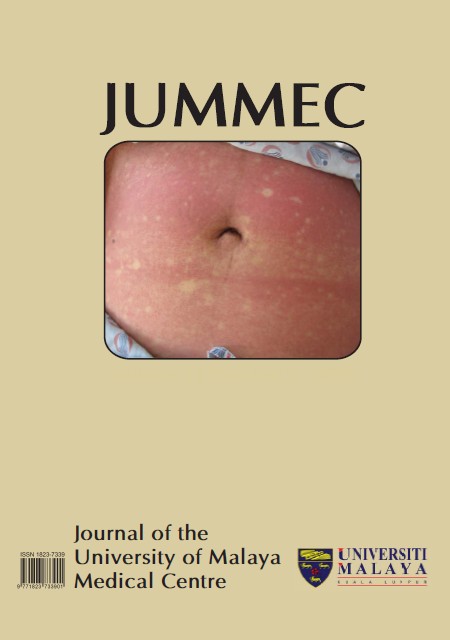DENGUE: BREAKBONE FEVER, HEMORRHAGIA OR SHOCK
Abstract
Dengue virus infection has been endemic in Malaysia and in the region for decades and the disease caused by the virus has led to increased morbidity and mortality each year. Dengue is now endemic in more than 110 countries worldwide with two-fifths of the world's population at risk. Dengue fever is a flu-like illness and clinical features vary with the age of the patient. Dengue haemorrhagic fever on the other hand, is characterized by high fever, haemorrhagic phenomena and in severe cases, circulatory failure. There is no specific treatment for dengue fever but careful clinical management frequently saves the lives of these patients. Vaccine development has been difficult as protection against one or two dengue viruses could actually increase the risk of more serious diseases. At present, the only method of preventing dengue is to combat the vector mosquitoes. Dengue is diagnosed by viral isolation and or serology. Current methods, some in-house and others commercial, are far from satisfactory. My laboratory has developed, evaluated and validated tests for dengue that now enable detection on the first day of illness in most cases. At the same time an important aspect of dengue prevention is protection. To this end, we have been investigating the various immune parameters such as T-cells, cytokines and antibody neutralizing activities to show that specific immune responses do occur in a selected Malaysian population which are HLA restricted, cytokine mediated and directed specifically at certain regions of the virus.
Downloads
Downloads
Published
Issue
Section
License
All authors agree that the article, if editorially accepted for publication, shall be licensed under the Creative Commons Attribution License 4.0 to allow others to freely access, copy and use research provided the author is correctly attributed, unless otherwise stated. All articles are available online without charge or other barriers to access. However, anyone wishing to reproduce large quantities of an article (250+) should inform the publisher. Any opinion expressed in the articles are those of the authors and do not reflect that of the University of Malaya, 50603 Kuala Lumpur, Malaysia.


